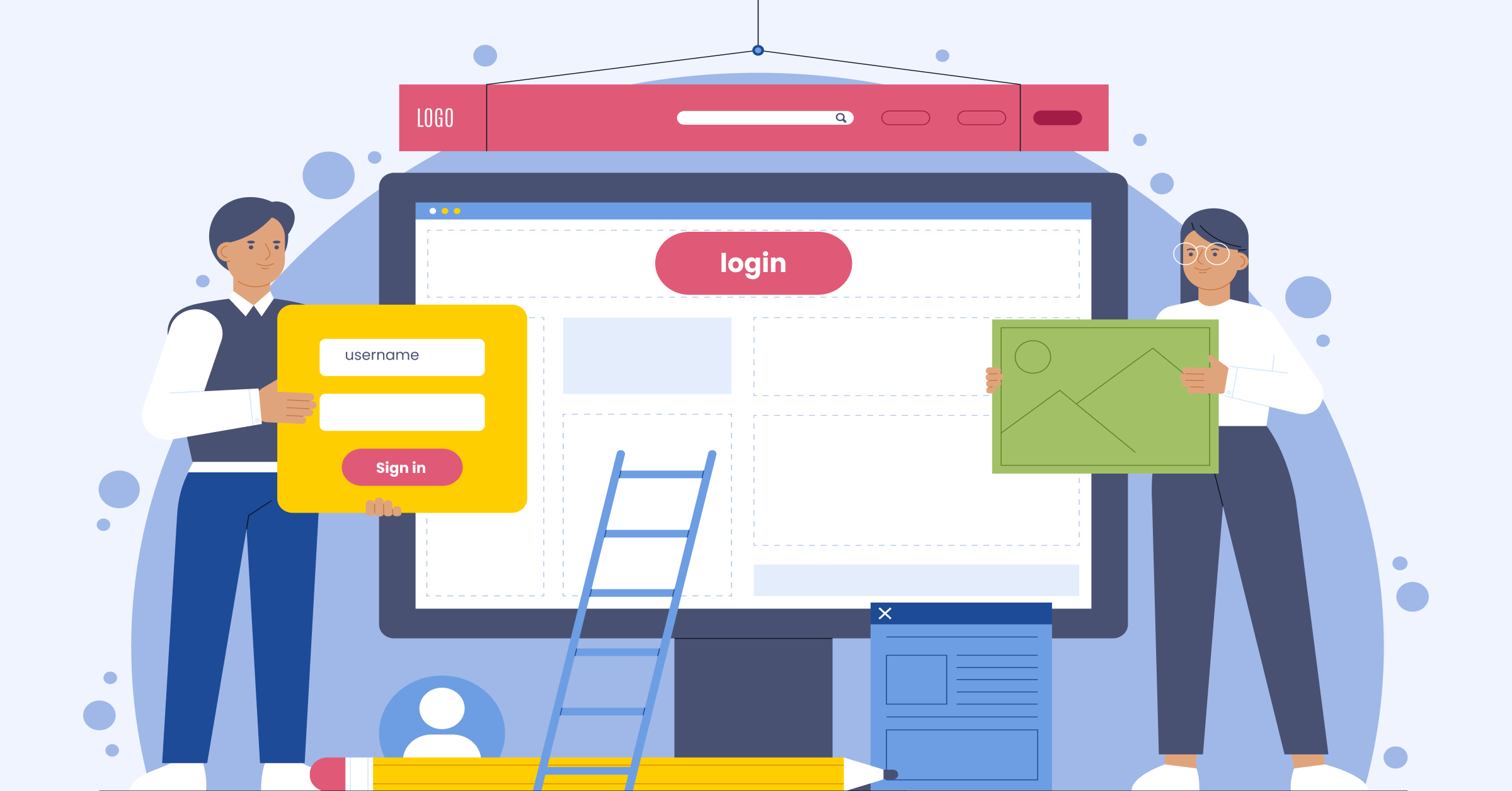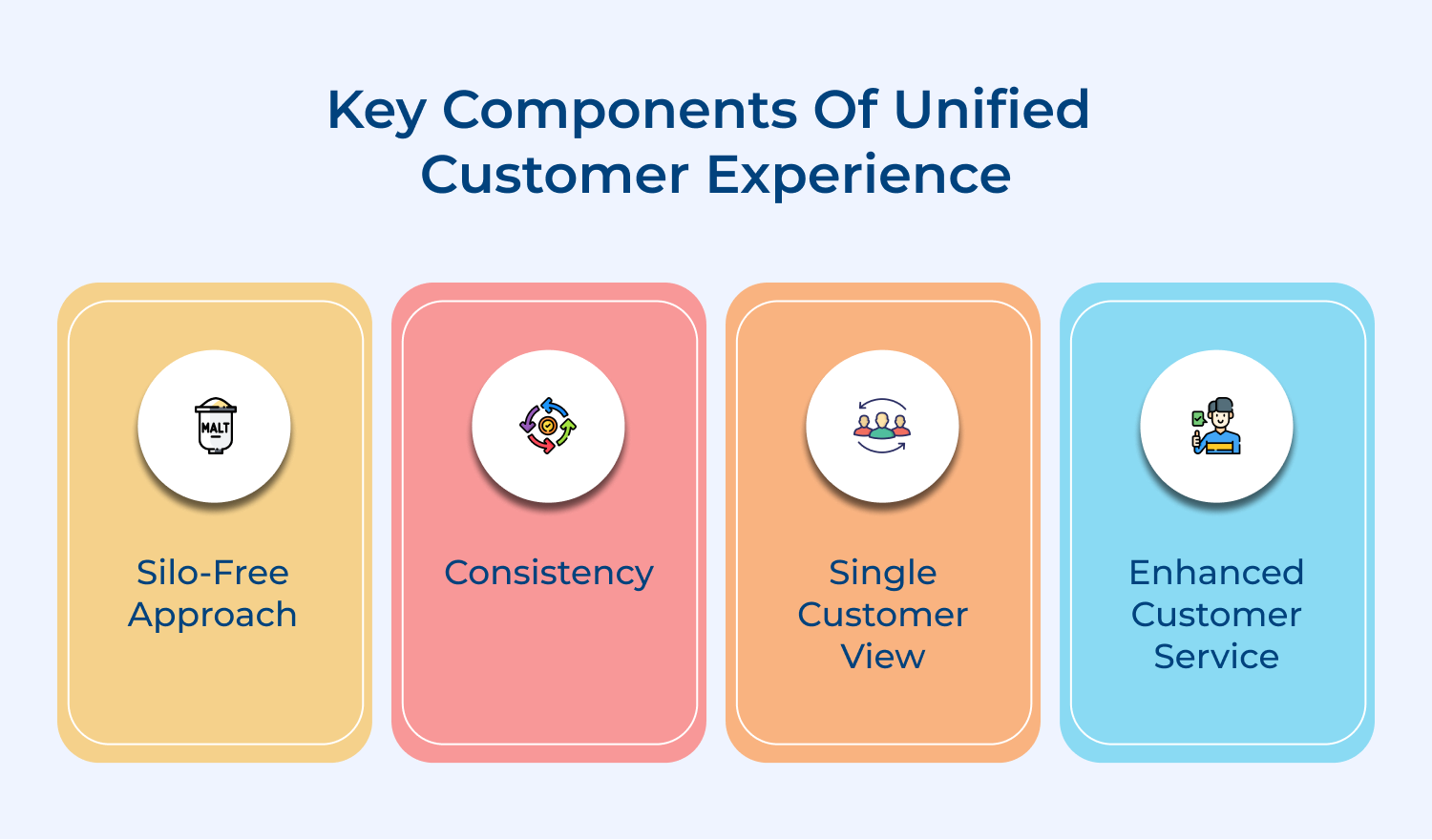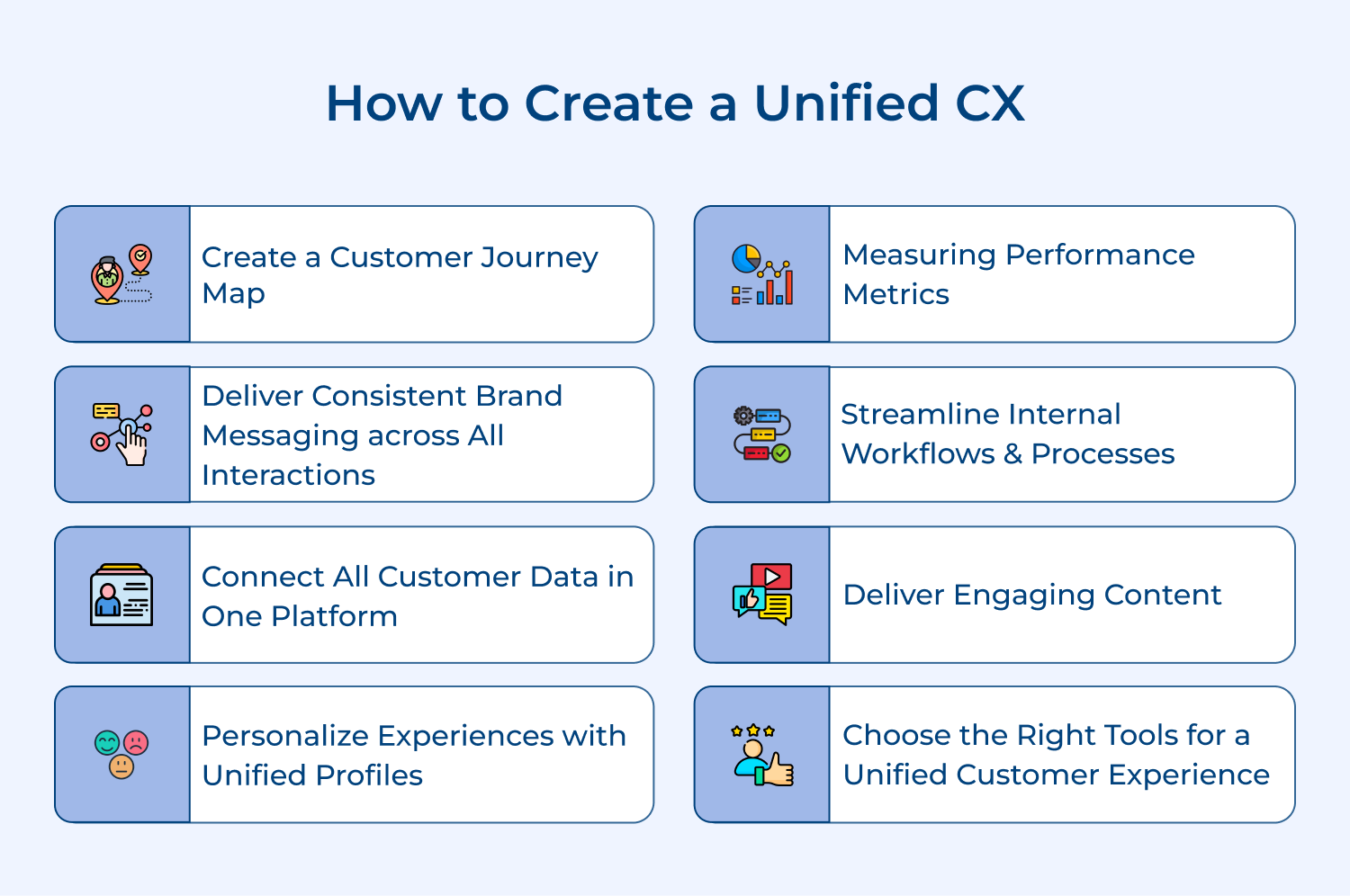1. Create a Customer Journey Map
Creating a successful unified customer experience requires a deep understanding of the different stages of the client journey.
A customer journey map can help businesses recognize various touchpoints that can impact customer interactions and inform the right approach to enhancing customer experiences.
Here is how to implement a customer journey map effectively:
- Define the different stages of the customer journey: Map out the various stages that the customer goes through, such as awareness, consideration, purchase, retention, and advocacy.
- Understand the customer mindset: Understanding the customer’s perspective is crucial hence, businesses should map out the client’s mindset at each stage to identify pain points.
- Map out all touchpoints: It is essential to identify every point of contact and understand the channels preferred by the customer to communicate.
2. Deliver Consistent Brand Messaging Across All Interactions
Create a seamless Unified Customer Experience by delivering consistent brand messaging across all interactions to reinforce your brand image. By doing so, your marketing team will have a clear vision of what your brand should represent across channels to ensure a coherent customer experience.
Tips to implement consistent branding messaging across your marketing channels:
- Develop a tone and style guide: A comprehensive guide should include preferred editorial style, tone, and voice. It will help ensure that your brand’s messaging is consistent across all channels.
- Create a design style guide: Consistency should extend to design elements such as typography, color schemes, and brand guidelines to ensure that your brand has a unified visual identity.
- Share Internal memos: Ensure that your teams are aligned on key messaging around product launches, updates, and promotions by sharing internal memos.
3. Connect All Customer Data in One Platform
A Single Customer View (SCV) enables brands to use critical customer data efficiently. Businesses have started to realize the importance of a customer’s lifecycle and have started collecting data from various sources such as CRM, e-commerce platforms, web analytics, mobile analytics, and POS solutions.
The data is often scattered across different departments, leading to inefficiencies and a lack of complete customer understanding. Connecting all data to one platform is necessary to resolve the issue.
Know how to implement the strategy:
- Identify all marketing solutions used by your business and their data sources. It includes your CRM, e-commerce platform, POS solution, web analytics, mobile analytics tools, etc.
- Centralize the data from all these sources into a Customer Data Platform (CDP). A CDP allows for the aggregation of data from various sources to create a single customer profile.
- Automate the process of data collection as it reduces time to get valuable insights and ensures the data is of high quality.
4. Personalize Experiences with Unified Profiles
Personalization is one of the keys to delivering a great customer experience.
Leveraging customer data to gain insights into their behaviors, businesses can tailor their products/services to create a more individualized experience. It leads to increased customer satisfaction as well as revenue.
Businesses can follow the below steps to implement personalization through unified profiles and insights:
- Collect customer data from various sources such as satisfaction surveys, social media, and transaction history.
- Analyze the gathered data to understand the customer better, their behaviors, preferences, and needs.
- Use the insights derived from the analysis to create tailored product recommendations and promotions for individual customers.
5. Measuring Performance Metrics
Tracking the success of your unified customer experience program is critical to its long-term success. But with so much data at your fingertips, it can be challenging to know which performance metrics are the most important to track.
Utilizing performance metrics is the best way to ensure that you’re providing your customers with excellent service, identifying friction points, and optimizing your workflow to improve your overall CX strategy.
Ways to implement the strategy:
- Identify the performance metrics that matter for your business. Customer satisfaction, customer churn rate, and customer acquisition costs are three key metrics that help to understand the effectiveness of your customer experience.
- Automate the system to analyze these metrics. Automated data collection and analysis will save you time and help you get a more comprehensive understanding of your CX program’s strengths.
- Analyzing your performance metrics will give valuable insights into how to boost customer satisfaction, reduce churn rate, and lower your customer acquisition costs.
6. Streamline Internal Workflows & Processes
Businesses need to streamline internal workflows and processes to deliver a unified customer experience. It allows businesses to achieve greater efficiency, accuracy and consistency across their operations. By doing so, they can enhance their customer interactions, reduce errors and cut costs.
Know how to streamline internal workflows and processes:
- Evaluate your existing workflows and identify areas for improvement. Look for bottlenecks that slow down progress and inconsistencies that affect quality.
- Implement automation tools, such as Zoho CRM Plus, to streamline the process and ensure compliance from all teams involved. Automation helps eliminate repetitive tasks, reduce errors, and speed up processes, freeing up teams to focus on critical tasks.
- Ensure that your team members act as an extension of your brand by promoting brand values, culture and processes.
7. Deliver Engaging Content
Creating engaging content at every step of the customer lifecycle is crucial for delivering a unified customer experience. It is important to understand your target audience and what type of content they engage with to ensure your efforts align with their preferences.
Here are ways to deliver engaging content throughout the customer lifecycle:
- Research your target audience to understand their needs and preferences. It helps in creating content that resonates with them and ensures that you deliver the information they are looking for.
- Develop customized content that speaks to your target audience’s interests and guides them through each stage of their journey. The approach helps create a personalized experience and builds a strong customer relationship.
- Ensure your content is adaptable across different channels. The right message needs to reach the right customer, at the right time on the right channel.
8. Choose the Right Tools for a Unified Customer Experience
Choosing the right tools for a unified customer experience is crucial in providing exceptional service. These tools help maintain a consistent, comprehensive customer view across multiple touchpoints and provide your service agents with the necessary data to offer satisfactory interactions.
Ways to choose the right tools to deliver unified CX:
- Measuring and enhancing CX performance metrics through automation is another critical tool for a unified customer experience. Automation enables businesses to analyze multiple touchpoints and identify areas for optimization to improve customer satisfaction.
- Utilizing customer data platforms, automation, contact centers, and business solutions can streamline CX operations as well as enhance performance metrics.
Examples of Unified Customer Experience
Implementing a unified customer experience strategy is the backbone of any business that wants to bolster customer satisfaction and increase customer loyalty.
Here are 5 companies from different industries that have successfully implemented a unified CX program.
1. Starbucks
The coffee giant has been a trailblazer in implementing a unified CX strategy, connecting all of its touchpoints through its mobile app.
Starbucks rewards program, availability of mobile ordering, and loyalty program have all been linked to the app. It enhances customer engagement and offers personalized promotions across channels while maintaining a cohesive brand identity.
2. Airbnb
Airbnb has redefined customer experiences, linking up all of its customer data to deliver a consistent experience across all touchpoints by implementing a unified CX program. Its guests can communicate with hosts using the app, access local areas of interest, rent apartments, and book experiences, all in one place.
Airbnb also uses machine learning to provide personalized recommendations based on customer data, resulting in increased guest satisfaction during their stays.
3. Sephora
Sephora has implemented a unified CX strategy by linking up all of its customer profiles across touchpoints. Sephora’s Beauty Insider program collects information customer’s skincare preferences/ shopping history/ behaviors, which helps to deliver personalized recommendations and experiences to customers across all channels of interaction. It also uses its mobile app to enhance customer experience by allowing customers to virtually try on makeup and get helpful beauty tips.
4. Walmart
Walmart’s investment in a unified CX program has helped it stay relevant in the fiercely competitive retail industry. It implemented a unified data platform that links up the company’s online and offline interactions, helping to deliver personalized recommendations and promotions to customers both in-store and online. Its success with its online grocery delivery service has also contributed to enhanced customer satisfaction and increased loyalty.
5. Amtrak
Amtrak implemented a unified CX program that combined multiple booking channels, allowing passengers to purchase, reserve, and access their ticket information in one place. By linking up all customer data on one platform, Its reservation system provides passengers with personalized recommendations and experiences while helpfully guiding them through their journey. It has also set up a rewards program for frequent riders, which only helped to increase customer loyalty.
Select Right CX Platform for Unified Customer Experience
Selecting the appropriate CX platform is critical in delivering a consistent and unified customer experience. A unified CX management platform brings together all customer data, provides insights, and offers a single source of truth, allowing for more personalized interactions with customers. The system can also help businesses identify experience inconsistencies, gather customer insights, and measure performance metrics.
There is an array of CX platforms available in the market. Adobe Experience Cloud is a popular platform that offers an AI-powered tool for personalization. As customer expectations continue to evolve, it becomes increasingly important to invest in a CX platform that centralizes all CX initiatives, connects customer data, and enables insights, to maintain loyal customers in the long-term.







